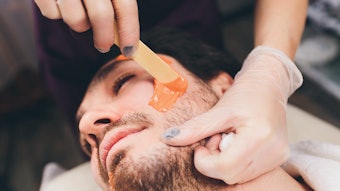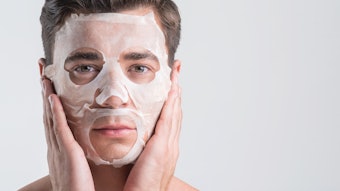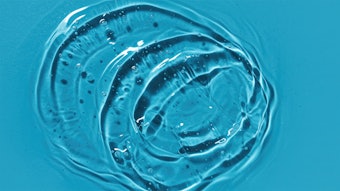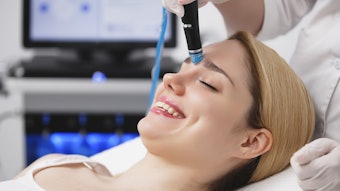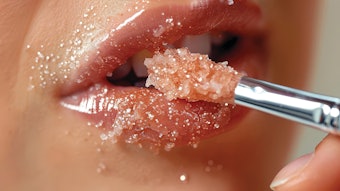Following are answers to questions posed during the live webinar, The Truth About Cellulite, featuring Peter T. Pugliese, MD.
1. Are their any foods we can use/suggest to our clients that will help speed up results?
A. Yes. First cut down on or eliminate sugars--if it’s sweet, don’t eat it. Fruits, veggies, lean meats and some seafoods are OK. Watch baked goods, including bread.
2. Are there foods, vitamins or supplements that can help or strengthen the body’s tissues?
A. For foods, see answer to question 1. Supplements: oligomeric proanthocyanidins, (Pycnogenol), 100-200 mgs a day; Asiatic acid; vitamin C, 500 mg daily; l-carnitine, 500 mg daily; reseveratrol, 200-400 mg a day in divided doses. Soy milk may help.
3. Bottom line: What is the treatment?
A. I have written the treatment in detail in a new article for Skin Inc. called A New Look at Cellulite. See the July 2008 issue or log on to www.SkinInc.com in July 2008.
4 . Can cellulite products work on the stomach and upper arms?
A. Yes. They are not quite as effective, but they do work.
5. Can someone get cellulite other than the bum area and thighs, like the upper arms and stomach area?
A Not true cellulite, since fat in other areas is readily metabolized; that is, it is used fairly quickly so cellulite is not apt to form.
6. Can ultrasound be used to make active products more effective?
A. Ultrasound can help certain products to penetrate better, resulting in more product, quicker. The downside is that I am not sure it is the best force to use on damaged cellulite skin.
7. Can you really get rid of cellulite? With all those products out there, can they really work?
A. Yes, is the short answer. I do not know of any product currently available to treat cellulite that addresses the main cause of cellulite, which is collagen destruction. There is no rational basis to treat a disease and not attack the cause. You at treating only signs and symptoms, and the real condition never is treated.
8. Can you recap the ingredients that should be in topical treatment creams?
A. Yes. Genistein--a phytoestrogen from soy; oligomeric proanthocyanidins from grape seed and pine bark, or sea buckthorn oil; asiatic acid from Centella asiatic, also called gotu kola; extract of Coleus forskolii, theophylline acetate (or just theophylline) and acetyl carnitine, or just carnitine. Wear support hose, such as Alive or Supp-Hose, for better results.
9 Do AHAs help with reducing cellulite?
A. Not to my knowledge.
10. Do you have recommended reading for those women who have had complete hysterectomies and experience increased cellulite after surgery?
A. Unfortunately, there is no literature that I am aware of on this topic, probably because the concept of estrogen and cellulite is relatively new and has not gotten into the mainstream of science. It is not the hysterectomy per se that makes cellulite worse; it is the lack of adequate feedback on the hormones and MMPs to shut them down. The treatment I have outlined above should help.
11. Do you think certain foods or carbonated drinks make cellulite worse?
A. I believe there are two food that are bad for cellulite: one is sugar of any form, and the other is diet soda.
12. Does alcohol add cellulite or fat?
A. Alcohol is a simple compound that is metabolized more as a toxin than a food. If left to itself, it would be metabolized to acetaldehyde and then to acetic acid in the liver. Without food, it can not be metabolized as the citric acid cycle needs substrate (real food) to metabolize acetic acid. It is not food per se, but the acetic acid can be converted to fat under certain circumstances. Most people who gain weight by drinking alcoholic drinks are usually drinking beer or sweet, sugar-laden drinks. For women, a ½-ounce of alcohol is the maximum allowed per day. It has no relation to cellulite to my knowledge.
13. Does any of this have any relating issues with stretch marks?
A. I believe the two are closely related and have similar causes. Stretch marks are somewhat more complex than cellulite, but I believe the increase in abdominal pressure and the high levels of MMPs in pregnancy (as well as in early puberty) cause stretch marks on the belly and breasts.
14. Does ingesting L-carnitine benefit?
A. Absolutely. L-carnitine will help to mobilize fat, give you more energy and, along with the other treatment agents mentioned above, will really help cellulite. Use it both orally and topically.
15. Does menopause affect cellulite if hormones have decreased and menstruation ceased?
A. Yes, you are still making estrogen, cellulite will continue, basically because your fat cells will make estrogen and MMPs will continue to be produced by fibroblast, even though you have no periods. Much of this is due to the decrease in total body collagen production and an increase in production of MMPs.
16. How about carboxy?
A. If you mean alpha carboxy acids, they are of no value to my knowledge in treating cellulite.
17. How does hormone replacement therapy affect cellulite?
A. Hormone replace therapy must be considered the same as an active estrogen producing ovary. You need the treatment as outlined above. Stay on the replacement hormone treatment, because, in the long run, you will be healthier and live longer.
18. How does topical caffeine affect cellulite?
A. Caffeine is a phosphodiesterase enzyme inhibitor. Phosphodiesterase destroys a second messenger in lipolysis called cyclic adenosine monophosphate, which stimulates the beta receptors in the fat cell to mobilize triglycerides. The net result is that topical caffeine will help to burn up fat in the cellulite areas.
19. How soon after childbirth can a person begin cellulite therapy?
A. Unless you are breast feeding, you could start four weeks after delivery.
20. I have been getting treatments that massage the body and my cellulite has amazingly started to go away. How does that happen?
A. You are blessed. Massage can induce some collagen deposition if done properly. You also will notice a shift of interstitial water and some displacement of fatty tissue. It is all temporary and will not have a long-term effect because you are not treating the root cause of cellulite.
21. I have clients that rub coffee grounds on their legs. Would you see this effective?
A. I am not sure of how much caffeine is in coffee grounds, but the effective chemical is most likely caffeine.
22 If a person is on Theophylline E R for asthma, will it help the process?
A. Not likely to help since theophylline is excreted in the urine and does not appear to accumulate in the fatty tissues to any extent.
23. If a woman has liposuction, does it, or how does it effect the circulation process of the MMPs?
A. Liposuction rips out everything: fat, connective tissue and blood vessels. It make a heyday for MMPs since there are no defenses and plenty of inflammation. Net result: It would increase MMPs in the liposuctioned area.
24. If cellulite has to do with the menstrual cycle, how does this relate to women that have had a full hysterectomy and still has cellulite that continues to get worse?
A. The process will continue if you have ovaries or have excess weight. The estrogen will continue to be made by the ovaries or the fat cells, and continue to stimulate MMPs in ther fibroblasts, which are all over the body.
25. If using a theophylline product in body wraps, how long does wrap need to stay on and which type of wrap should be used?
A. I am not an advocate of wraps. Theophylline will work, but it may take 30-60 minutes to get any effective penetration of theophylline.
26. Is collagen structure effected when you have abdominoplasty?
A. Not really. Abdominoplasty consists of excising a large amount of skin and fat. The only side effect would be a visible scar, which, in the hands of a good surgeon,will fade over a year or so.
27. Is there any easy at-home treatment? Anything with quick results?
A. There are no quick results for treating cellulite. It takes years to produce, and months, if not years, to correct, depending on the individual and severity of the cellulite. Current treatment is intended for home use and consists of topical preparation, support pantyhose and walking. Lymphatic drainage is an effective ancillary professional treatment.
28. Is there anyway to strengthen the connective tissue?
A. Two current ways. 1. Block the destruction with OPCs, and 2. Stimulate the formation of collagen with asiatic acid and vitamin C.
30. Will walking, along with product use and resistance training yield better results?
A. I am not sure about resistance exercises, but I believe they would help along with product use and walking.
31. What kind of effect does progesterone cream have?
A. I am not sure, but it is a fascinating question. Progesterone has many physiological effects on both muscle and bone, with adipose tissue it is quite complex. We are currently planning a trial with a cream containing progesterone and other ingredients, but you need to keep in mind that women should use progesterone in a cyclic fashion, probably not more than 10-14 days a month, starting after ovulation to day one of their cycle.




